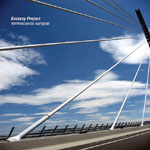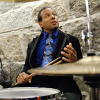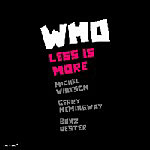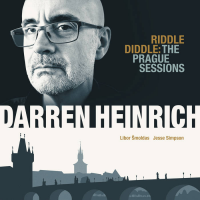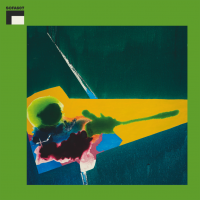Home » Jazz Articles » Album Review » Ecstasy Project: Reminiscence Europae
Ecstasy Project: Reminiscence Europae
The Italian song titles and chamber ensemble sobriety that dominate these live recordings allude to a classical approach, but the violin of Lukasz Gorewicz (the main voice of the group) comes from somewhere between the melancholia of eastern European folk and the animated style of violinists Jean-Luc Ponty and Jerry Goodman. The vibe playing of Pawel Nowicki is utterly minimalist, atmospheric in a Joe Zawinul-esque way, and evokes a Twilight Zone eeriness. Underpinning this esoteric face is the compelling drumming of nominal leader and main composer Rafal Gorzycki, which carries an energy and force in contrast to the edgy minimalism around him.
The pieces have a modern, avant-garde feel to them—soundtracks to European art-house cinema. The manipulation of space and silences, which lend such force to the infrequent eruptions of drums, violin and flute, are shaped by the minimal utterances of Pawel Nowicki's vibes, quietly rumbling drums, Pawel Urowski's alternately sparse and lively double-bass, and tense violin notes which are more percussive than melodic. But there is momentum to this music; the innate tension in the short staccato phrasing and the abstractness and dissonance, rises imperceptibly to crescendos that are surprising in their intensity.
On "Presto Cinque," violin and flute trace the initial lyrical melody before Gorewicz takes solo flight. Drums and bass propel the violinist into some inspired playing on a heady segment that evokes the Mahavishnu Orchestra. A brief, silent interlude follows, broken by a circular vibes motif, before Tomasz Pawlicki's flute takes center stage, the notes unfurling progressively and becoming bolder as crashing cymbals fill the air. Pawlicki's playing becomes gradually freer and breathier as the piece reaches a climax, and the guttural cry that escapes his throat reveals the influence of Rahsaan Roland Kirk, or perhaps Ian Anderson—comparisons that do not flatter him at all.
The combination of vibes and drums creates dense soundscapes on "Maestoso non troppo." "Adibitum" glides from bowed bass and violin in harmonious tandem to blistering drums to near silence impregnated by softly chattering vibes. This is music in a constant state of ebb and flow.
An accompanying DVD shows this lineup in concert, but the absence of its more animated tracks, featuring exhilarating violin and flute improvisations, provides only half the picture. The dark and edgy minimalist approach of Reminisence Europae holds a certain fascination precisely because of that juxtaposition of rationed and unrestrained improvisation. Nevertheless, admirers of modern, progressive music will not be indifferent to this challenging, original project.
Track Listing
Reminiscence Europae; Presto Cinque; El Pagedo; Maestoso non troppo; Adibitum - Allegretto rallentando; Moderato recitando. DVD: Maestoso non troppo; Sepre adagio; Adibitum - Allegreto rallentando; Moderarto recitando; Andante melanconia.
Personnel
Rafal Gorzycki: drums; Lukasz Gorewicz: violin; Pawel Nowicki: vibes; Pawel Urowski: double-bass; Tomasz Pawlicki: flute (2, 3).
Album information
Title: Reminiscence Europae | Year Released: 2009 | Record Label: Fonografika
Tags
PREVIOUS / NEXT
Support All About Jazz
 All About Jazz has been a pillar of jazz since 1995, championing it as an art form and, more importantly, supporting the musicians who make it. Our enduring commitment has made "AAJ" one of the most culturally important websites of its kind, read by hundreds of thousands of fans, musicians and industry figures every month.
All About Jazz has been a pillar of jazz since 1995, championing it as an art form and, more importantly, supporting the musicians who make it. Our enduring commitment has made "AAJ" one of the most culturally important websites of its kind, read by hundreds of thousands of fans, musicians and industry figures every month.


